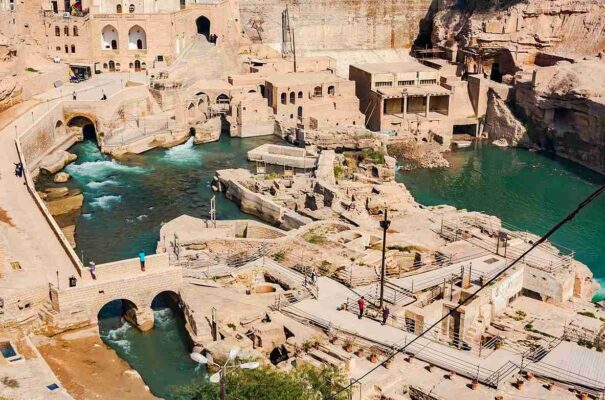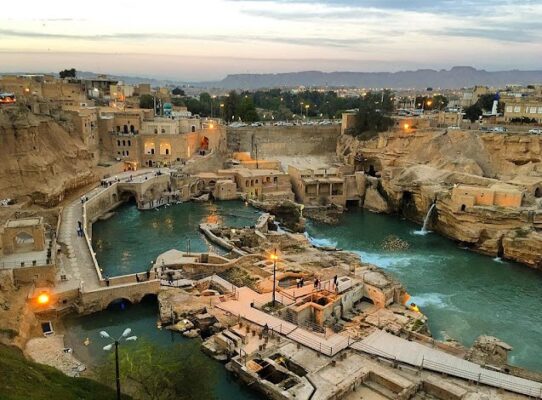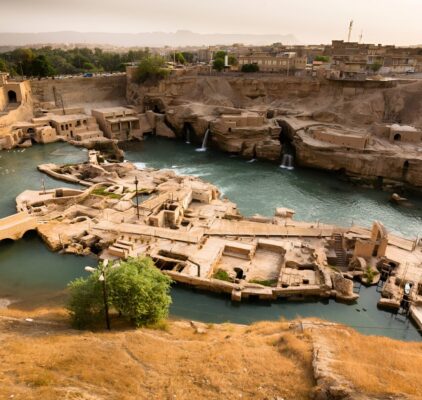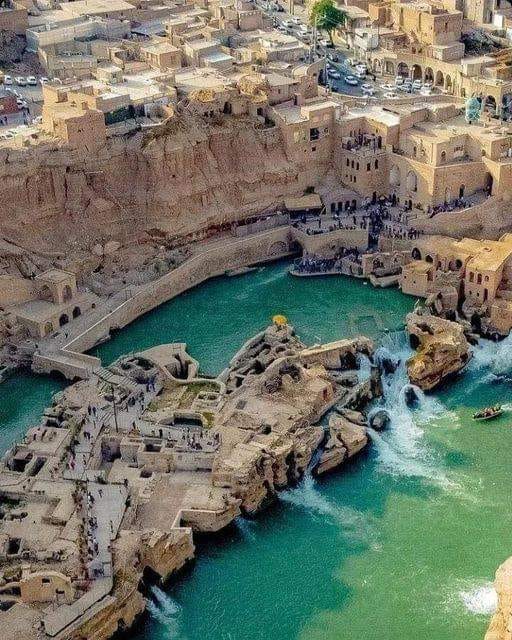Shushtar Historical Hydraulic System in Iran is a stunning testament to the ingenuity of ancient engineering. This UNESCO World Heritage site represents a harmonious blend of nature and human innovation, offering an unparalleled glimpse into advanced water management techniques from the 3rd century CE. Let’s explore the mysteries with archeology.dulichvn.net

1. An Overview of the Shushtar Hydraulic System
1.1 What is the Shushtar Hydraulic System?
Shushtar’s Hydraulic System is a sophisticated network of 13 dams, bridges, canals, and watermills. These interconnected structures were designed to control and utilize the powerful Karun River, ensuring water availability for agriculture and urban needs.
1.2 Why is it a UNESCO World Heritage Site?
Designated as a UNESCO World Heritage Site in 2009, Shushtar is celebrated for its outstanding universal value. It represents one of the world’s oldest and most complete hydraulic systems, showcasing innovation that significantly impacted ancient civilizations.
1.3 Historical Significance of Shushtar
Constructed during the Sassanian era under Shapur I, the hydraulic system highlights the empire’s advanced understanding of engineering and their dedication to supporting sustainable development.

2. Engineering Marvels of Shushtar
2.1 The Karun River and Its Transformation
The system ingeniously redirects the Karun River’s flow through canals and tunnels, splitting it into smaller streams to maximize efficiency and reduce flood risks.
2.2 The Role of the 13 Dams and Bridges
The dams and bridges work in unison to control water flow, protect against erosion, and channel water to areas in need. Key examples include the Gargar Bridge-Dam and the Mizan Dam.
2.3 Watermills and Their Impact
Shushtar’s watermills used the diverted water to grind grains, demonstrating how ancient engineers combined functionality and sustainability to serve the local community.

3. Shushtar’s Legacy and Modern Importance
3.1 A Symbol of Ancient Innovation
The intricate design of the Shushtar Hydraulic System reflects the brilliance of ancient engineers who balanced human needs with environmental stewardship.
3.2 Preservation Efforts
Ongoing conservation projects aim to maintain this historical site, ensuring that its legacy continues to inspire future generations.
3.3 Lessons for Modern Water Management
Shushtar serves as a model for modern engineers, emphasizing the importance of sustainable and efficient water resource management in addressing contemporary challenges.
See morre: Standing Tall The Story of Redwood Trees and Their Timeless Beauty
Conclusion
The Shushtar Historical Hydraulic System is more than an engineering wonder—it’s a symbol of how ancient civilizations thrived by integrating innovation with the natural world. Visiting this site is like stepping into the past, where every dam, canal, and watermill tells a story of human ingenuity and environmental harmony.


CÁC TIN KHÁC
Mark Twain & Olivia Langdon: A 36-Year Love Story Filled with Laughter and Devotion
The Tollund Man: A 2,400-Year-Old Mystery Preserved in a Danish Bog
Skara Brae: Scotland’s Hidden Neolithic Village
Porta Nigra: The Hidden Depths of Trier’s Iconic Roman Gate